In our human body, skin healing is a sophisticated biological process that happens on its own. It alludes to the body’s capacity to regenerate and restore worn-out or damaged skin tissue. To repair the functionality and structural integrity of the skin, a complex series of cell damage and molecular activities must occur. In a variety of circumstances, from bruising and small cuts to more serious wounds and incisions made during surgery, skin healing is required.
In this article, we will explore the stages of how to speed up skin healing on the face and the situations that call for it. We’re not talking about healing that happens incredibly quickly here. There is due process for everything to produce optimal results.
For the best outcome in your skin healing process, follow our tips. But first, let’s look at what causes wounds on the skin before we get started.
Learn More!
Causes Of Skin Injury And Damage
The causes of injury or damage to skin tissue are numerous.
Typical causes include:
Trauma:
Physical wounds on the skin like cuts, burns, abrasions, or puncture wounds are capable of affecting our skin tissue in various ways. These injuries are usually caused by mishaps, falls, running into sharp objects, or being exposed to sunlight (UV radiation).
Diseases:
The skin tissue may likely become damaged by infections with viruses, bacteria, and fungi. Some examples may include cellulitis, impetigo, athlete’s foot, the herpes simplex virus, and other fungi-related diseases.
Irritation:
Chronic irritation can cause inflammation which may eventually lead to the damage of skin tissue. A couple of disorders that cause persistent inflammation and skin damage include lupus, psoriasis, and eczema.
Allergy symptoms:
Products including cosmetics, medications, and chemicals can cause allergic reactions in most people. Some allergy symptoms include itchiness, blistering, redness, and swelling of the skin.
Immune disorders:
When the immune system attacks normal skin cells, autoimmune diseases like scleroderma and systemic lupus erythematosus are bound to occur.
Chronic conditions:
Conditions like chronic illnesses, which include – diabetes or peripheral vascular disease, that reduce the flow of blood to the skin can impair wound healing and make a person more exposed to skin damage.
Ultraviolet radiation:
Persistent exposure to ultraviolet (UV) light from the sun can result in early aging, sunburn, and a higher risk of developing skin cancer. Skin cells may potentially be harmed by this.
Environmental factors:
Environmental conditions whether, they are too dry or cold, polluted, or exposed to toxins can damage the skin tissue over time.
Genetic disorders:
Some inherited defects can also damage the integrity of our skin and make it more susceptible to harm. Some examples include epidermolysis bullosa, a rare inherited condition marked by thin and easily blistered skin.
It’s crucial to note that the aforementioned list is not exhaustive, and there may be additional causes of skin tissue damage. If you are concerned about your skin’s health or other skin-related issues, you must always consult a skin doctor (dermatologist) to get a specific diagnosis and the right treatment.
Image Source: Freepik!
Autoimmune Disorders That Can Damage or Injure Your Skin?
When the immune system misfires and assaults healthy cells in the body and tissues, autoimmune disorders result. Numerous autoimmune conditions can harm the skin and cause a variety of dermatological symptoms.
Here are a few instances:
Systemic lupus erythematosus:
Skin can be impacted by SLE, a chronic autoimmune condition that can affect several organs. Malar rash, a recognizable butterfly-shaped rash that frequently spreads across the cheeks and nose, is a common symptom. Other skin signs of SLE include subacute cutaneous lupus erythematosus, photosensitivity, and discoid lupus erythematosus, which causes circular, scaly spots on the skin.
Dermatomyositis:
An autoimmune condition called dermatomyositis mostly affects the skin and muscles. It results in a recognizable skin rash and muscle weakness. The face, chest, elbows, back, knees, and knuckles are the typical locations for the rash to emerge. It is known as heliotrope rash and can appear as reddish-purple areas, frequently with a bluish hue. Another distinguishing feature is Gottron’s papules, which are elevated, scaly areas on the finger and knuckle joints.
Systemic sclerosis (scleroderma):
The production of collagen in scleroderma, an inflammatory disease, causes fibrosis and the hardening of the layer of skin. Localized scleroderma, which predominantly affects the skin, as well as systemic sclerosis, which impacts the skin and other internal organs, are the two main ways in which it might present. Skin thickening, tightness, and stiffness can occur as a result of systemic sclerosis, especially on the fingers, hands, trunk, and face.
Pemphigus:
The autoimmune blistering disease known as pemphigus affects the mucous membranes and skin. Blisters and erosions develop as a result of the immune system wrongly attacking the proteins that bind skin cells
The two most prevalent kinds of pemphigus are pemphigus foliaceous and pemphigus vulgaris, each of which has unique clinical characteristics and blister-formation patterns.
Pemphigoid bullous:
Another autoimmune blistering condition that primarily affects the elderly is bullous pemphigoid. Hives and huge, tight blisters on the skin are its defining features. The legs, abdomen, arms, and other parts of the body are frequently where the blisters develop. In some circumstances, mucous membranes may also be involved.
These are only a few instances of autoimmune conditions that can harm skin tissue. Each of these ailments may have unique diagnostic standards, therapeutic alternatives, and dangers. It is crucial to get medical advice from a dermatologist if you think you have an autoimmune illness or are exhibiting skin-related symptoms to receive the right diagnosis and treatment.
Image Source: Freepik!
Stages of Skin Healing
Hemostasis:
This is a skin condition that involves the creation of a blood clot to stop bleeding and is the initial phase of skin healing. Blood platelets clump together and emit biochemical signals that start the clotting process. This creates a transient barrier and aids in sealing off the broken blood vessels.
Inflammation:
Inflammation begins as a defensive reaction after hemostasis. Neutrophils and macrophages, two types of inflammatory cells, go to the damaged area to clear it of any debris, infections, or foreign objects. Additionally, these cells discharge cytokines and growth factors that promote the following phases of recovery.
Proliferation:
The body starts to repair the injured tissue during the proliferation stage. Specialized cells called fibroblasts, which make collagen, go to the site of the wound. Angiogenesis, the expansion of new blood vessels, and the development of granulation tissue are both supported by the matrix that collagen creates. At the edges of the wound, epithelial cells also begin to proliferate and move, progressively covering the wound.
Remodeling:
Remodeling, which is the last phase of skin healing, involves the maturation and restructuring of the newly produced tissue. The wound contracts and shrinks as the extra collagen starts to break down over time. The skin that has healed gradually gains tensile strength, however, it may not fully regain its previous strength.
More Content
Image Source: Freepik!
The Importance Of Skin Healing
Wound healing:
Skin healing is important for wounds like small punctures, abrasions, cuts, and lacerations. The body can easily heal the skin, reducing the likelihood of infection while upholding the skin’s defenses against things like pathogens, and preventing additional damage.
Surgical cuts:
Surgery recovery is crucial for the wound surrounding to properly close and heal. Achieving sufficient healing lowers the risk of postoperative issues such as wound reopening, drawn-out healing, and infections.
Burns:
Whether a burn was caused by radiation, heat, or chemicals, skin healing is crucial for the reconstruction of healthy tissue in a burn circumstance. With excellent recovery, pain is reduced, infections are avoided, and scarring is reduced.
Skin issues:
The skin can be damaged by various skin disorders like eczema, psoriasis, and acne. Skin healing is necessary for the repair of the skin, symptom relief, and the restoration of the skin’s basic functionality and appearance.
Ulcers and pressure sores:
Effective skin healing is essential for chronic wounds like pressure sores and ulcers to prevent complications and promote tissue regeneration. People with limited mobility or preexisting medical conditions are frequently the victims of these cases, making full healing necessary for an enhanced quality of life.
Injury and trauma:
In cases of catastrophic injuries, like fractures or deep wounds, skin healing is essential. It speeds up recuperation, lowers the danger of infections, and aids in skin integrity restoration.
Skin cancer therapy:
After surgical removal or other therapies like radiation therapy, skin healing is crucial in the management of skin cancer. Proper healing reduces the chance of cancer recurrence and aids in the closure of surgical wounds.
How to Speed Up Skin Healing on Face
Image Source: Freepik!
Consider using these suggestions below to hasten the recovery of your facial skin:
Clean the area:
Twice a day, gently wash your face with a gentle cleanser and warm water. Avoid using abrasive soaps or washes that could make the skin even worse.
Keep the wound clean and protected:
Covering an open wound or scab with a sterile bandage will keep it shielded from the elements. This promotes quicker healing and infection prevention.
Moisturize always:
Apply a mild, non-comedogenic moisturizing skincare product to your face regularly to keep the skin nourished. By moisturizing, you can avoid dryness and cracking and promote a healing environment.
Do not pick or scratch:
Avoid picking, scratching, or peeling off your These behaviors raise the chance of infection, slow the healing process, and leave scars.
Use topical remedies:
You might think about using over-the-counter topical treatments, like antibiotic ointments, hydrocortisone creams, or certain ointments suggested by a dermatologist, depending on the kind of skin injury you have.
Apply sun protection:
To stop more harm and hasten healing, cover your face from the sun. Put on a wide-brimmed hat and broad-spectrum sunscreen with a Sun Protection Factor (SPF) of not less than 30 before going outside.
Reduce irritants:
Avoid using harsh chemicals, perfumes, and cosmetics that could irritate the skin while it heals. Instead, choose hypoallergenic and fragrance-free products.
Consume a balanced diet and stay hydrated:
Make sure you consume enough water. This will help you stay hydrated because doing so promotes good skin health. Eat a balanced diet. Something rich in fruits, vegetables, and lean proteins, including vitamins A, C, and E, because they help with skin healing.
Ensure you obtain good sleep:
Your body may focus on healing when you get a good restful sleep. Make sure you get enough of that every night to support your skin’s healing mechanisms.
Note that everyone heals at varying rates, therefore it might require some time for your skin to completely recover. Regular care and patience are the keys to promoting rapid healing and lowering the likelihood of complications.
Here are additional guidelines to help you understand and speed up the healing process of the skin on your face:
Keep up a healthy lifestyle:
A balanced diet and regular exercise are important components of general skin health, as are correct hydration and stress management. By enhancing blood flow and fostering a strong immune system, these elements may indirectly aid in the skin healing process.
Take care when using natural remedies:
Even though natural remedies may have anecdotal benefits for skin recovery, it’s vital to use them with caution and seek medical attention, particularly if you are susceptible to sensitive skin. Ingredients including tea tree oil, aloe vera, and honey are commonly suggested for their supposed therapeutic properties, despite the fact that different people react differently to them.
Refrain from taking tobacco and abusing alcohol:
Smoking delays the process of healing, which can cause challenges and postpone your skin healing efforts. Extreme consumption of alcohol may also impair the skin’s ability to heal itself. It is crucial to refrain from or reduce certain behaviors to promote skin healing.
Consider dietary supplements:
Supplements like zinc, vitamin C, vitamin E, and collagen peptides are usually associated with glowing, healthy skin. However, it’s essential to contact a medical professional before starting any supplements. They will ensure that they are safe and appropriate for your needs.
Treating specific skin conditions:
It’s important to treat and control any pre-existing skin conditions, like acne, eczema, or psoriasis, that can be hindering the healing of your skin. Ensure to see a dermatologist to come up with a complete treatment plan that promotes healing while treating the pre-existing issue.
Apply gentle skincare product:
During the healing process, moderate skincare practice is essential Avoid using aggressive exfoliants, harsh scrubs, or peels with chemicals as these may irritate the skin further. Select gentle, fragrance-free skincare products that are suitable for sensitive skin.
Decrease tension:
Persistent stress may negatively damage the body’s ability to heal. Yoga, deep breathing, meditating, and engaging in fun-filled activities are all exercises that will help you unwind and reduce stress.
Wait patiently for the skin to heal:
It’s important to remember that everyone’s skin recovers at a different rate and that some illnesses or injuries may take longer to recover from one person to the It takes persistence and dedication in your skincare routine to give your skin the essential treatment to heal properly.
See a skin doctor:
If you have a specific skin condition or concern, it is best to speak with a dermatologist so that they can provide you with personalized advice and treatment options that are appropriate for your needs.
Image Source: Freepik!
When to See a Doctor About a Persistent Skin Condition
It is advised to see a doctor in the following situations:
Vast or severe wounds:
If the wound is deep, contains visible fat, or is longer than an inch, it is best to get medical attention Stitches or a more advanced medical approach for wound closure may be required for such wounds.
If the wound is bleeding a lot:
If the wound is bleeding profusely and you cannot stop it after applying direct pressure for like 10 to 15 minutes, you should seek medical attention right away.
Prolonged healing:
If your wound does not heal after a reasonable period of me, it is advisable to contact a doctor. This may be a sign of a serious problem like a viral infection, or a compromised immune system.
Signs of infection:
If the wound appears red, swells, turns worse, aches more, or begins to produce pus, it may be infected. You must see a skin doctor right away if you start showing signs of a fever or notice red streaks emerging from the incision as these are signs of a more serious condition
Debris or foreign objects:
It is essential to have a medical professional examine and completely clean the wound if it has entrenched particles that are hard to remove or if there are any foreign items, such as glass or metal.
Human or animal bites:
Due to the germs in the mouth, bite wounds from humans or animals frequently have an increased likelihood of infection. For these kinds of wounds, getting medical assistance is advised.
Chronic health conditions:
It is best to visit a healthcare provider for optimal wound care if you have an underlying medical condition that may impede healing, such as peripheral vascular disease, diabetes, or a weakened immune system.
Image Source: Prevention!
Typical Symptoms Of An Infection In A Wound
Here are a few typical indications of infection in a wound:
Elevated pain:
An infection may be present if the pain in the area of the wound intensifies or throbs.
Redness and enlargement:
The region around the wound could become warmer to the touch, redder, or swollen. This inflammatory reaction to an infection is common.
Purging or releasing:
An infection may be present if the incision begins to exude yellowish or green pus or if the quantity of fluid draining from the wound increases.
Sour smell:
An infected wound may release an offensive odor. The presence of germs is frequently to blame for this odor.
Slow healing:
If the wound fails to demonstrate any signs of healing after a significant amount of time, this is a sign of a pre-existing infection.
Fever:
An infection-related systemic reaction to a wound might cause a fever. If your temperature is higher than 100.4°F (38°C) and you are displaying additional indications of disease, you must seek medical attention immediately.
Red slashes:
A lymphatic system disease may be indicated by red streaks of skin extending from the site to the skin surrounding it.
It is important not to forget that not all wounds are going to show these infection-related symptoms, and some symptoms may alter based on the type of wound and its location. For an in-depth assessment and advice on the best possible course of action, speak with a medical professional as soon as you suspect an illness.
You May Love These!
Image Source: Beauty & Fitness!
Recommended OTC Skincare Products for Wound Healing
There are several wound or skin-healing OTC products available in the market today.
Here are a few typical examples:
Using hydrocortisone cream:
This over-the-counter topical corticosteroid can help treat skin diseases like dermatitis, eczema, and insect bites by reducing the swelling, itching, and redness they cause.
Antibacterial creams:
Antibiotics found in products such as Neosporin and Polysporin help to heal minor burns, scrapes, and cuts by preventing infection.
Aloe vera lotion:
Because of its calming qualities, aloe vera may be used to soothe and hydrate the skin. It is frequently applied to dry skin, mild burns, and sunburns.
Petroleum jelly:
Petroleum jelly also referred to as Vaseline, creates a barrier of protection on the skin that keeps moisture in and speeds up the recovery of chapped skin.
Medications for acne:
Ingredients like salicylic acid or benzoyl peroxide, which may unclog pores, lessen inflammation, and accelerate the healing process of acne breakouts, are frequently found in over-the-counter acne remedies.
Calamine lotion:
Iron oxide and zinc oxide are two ingredients in this calming lotion that help ease mild skin irritations including rashes and itching.
Ceramide-containing moisturizers:
Natural lipids called ceramides support the skin’s protective barrier. Ceramide-containing over-the-counter moisturizers can aid in skin restoration and protection, particularly for disorders like eczema.
Silicone gel sheets:
These sheets help manage and heal scars. By forming a shield over the scar, they lessen its redness, flatten it, and gradually enhance its appearance.
It’s crucial to read and abide by the directions on OTC products and do a patch test before you start using it fully.
Recommend OTC Antibiotic Ointment
Here are a few well-known OTC antibiotic ointment brands:
Neosporin:
The well-known brand Neosporin sells a variety of antibiotic ointments. Neomycin, bacitracin, and polymyxin B are common ingredients in their products; these substances aid in infection control and wound healing.
Polysporin:
Polysporin provides antibiotic ointments that combine bacitracin and polymyxin B, much like Neosporin does. They are made to help in wound healing and infection prevention.
Bacitracin:
An antibiotic cream called Bacitracin has Bacitracin as its only component. It is frequently used for small burns, scrapes, and cuts and is effective against some forms of germs.
Triple Antibiotic Ointment:
The 3 popular medicines neomycin, polymyxin B, and bacitracin are combined in this generic name for antibiotic ointments. Triple antibiotic ointments come in a variety of brands and are commonly offered at drugstores and pharmacies.
It’s crucial to take into account any unique sensitivities or allergies that you could have to certain substances when choosing an antibiotic ointment. Always respect the product’s instructions and contact a doctor if you have any concerns or if the wound fails to heal within an appropriate period of time.
Conclusion
With all the abrasive externalities and excess exposure to UV radiation, knowing how to speed up skin healing on the face is paramount. Our guide contains the basic skin healing steps and best practices to help put you on guard if need be. But keep in mind to always run to a skin doctor in case your skin condition becomes more complicated than you can handle ordinarily.

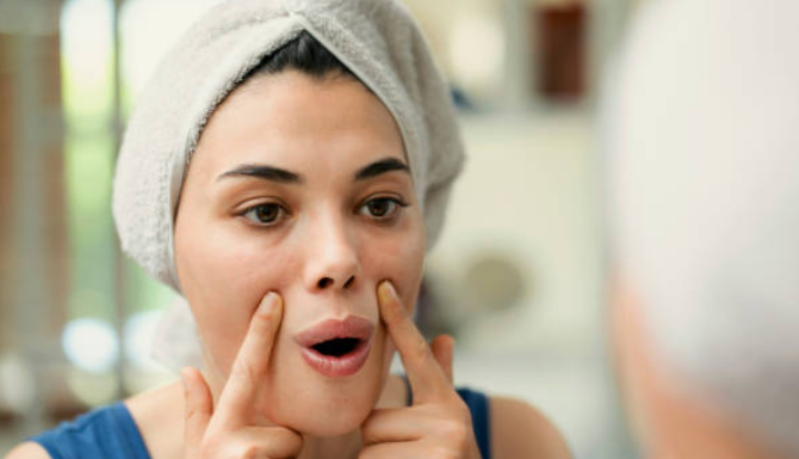
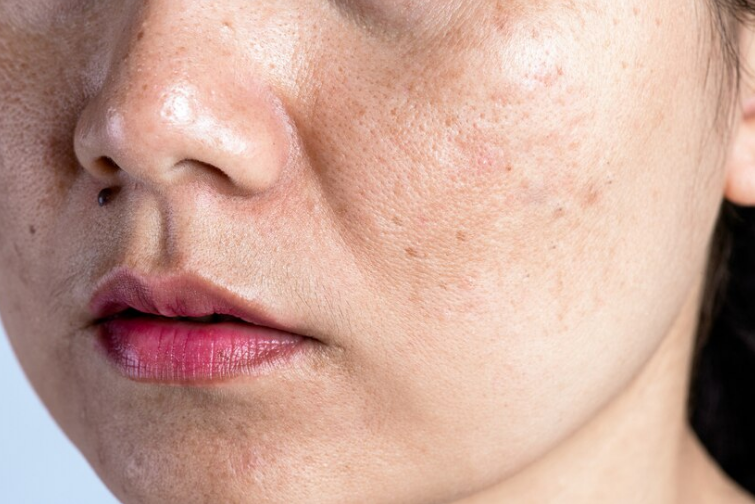
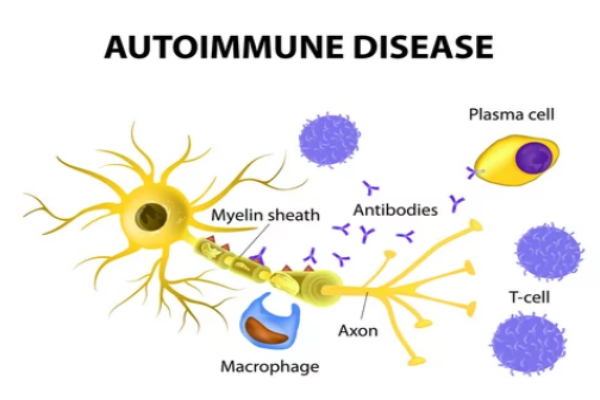

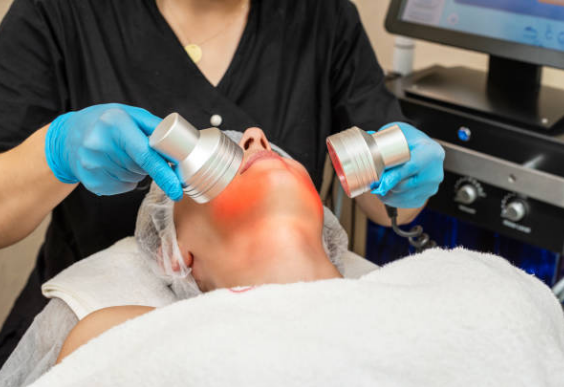

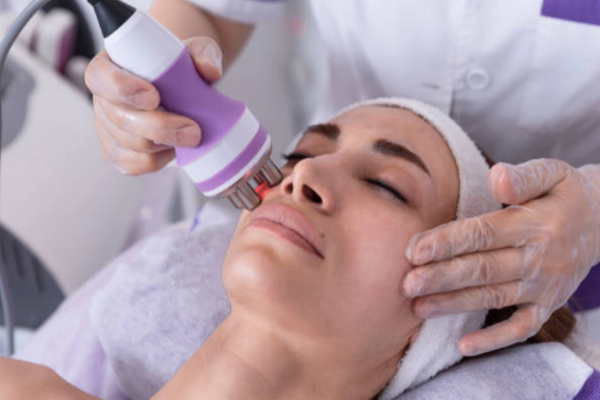
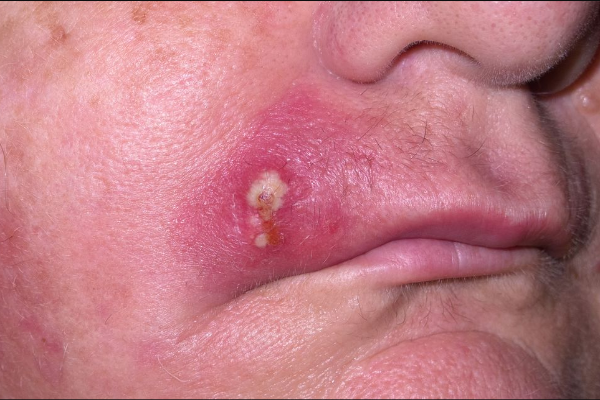
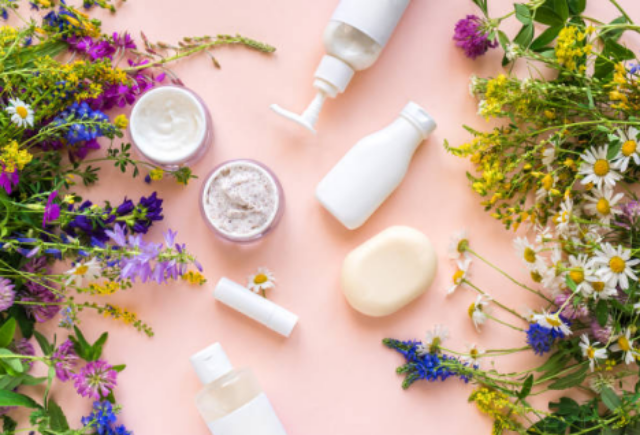
I’m lost in the ocean of knowledge on your website, and I hope that your intellectual journey continues to go well. I hope you keep making waves.
very informative articles or reviews at this time.
Thank you very much. Providing information is what we do best. Keep an eye on our blog for informative industry knowledge like this.
I do agree with all the ideas you have introduced on your post They are very convincing and will definitely work Still the posts are very short for newbies May just you please prolong them a little from subsequent time Thank you for the post
Hi my family member I want to say that this post is awesome nice written and come with approximately all significant infos I would like to peer extra posts like this
Thank you I have just been searching for information approximately this topic for a while and yours is the best I have found out so far However what in regards to the bottom line Are you certain concerning the supply
Hello Neat post Theres an issue together with your site in internet explorer would check this IE still is the marketplace chief and a large element of other folks will leave out your magnificent writing due to this problem
Thank you for your feedback! I’m glad you enjoyed the post. I appreciate you bringing the Internet Explorer issue to my attention. I’ll look into it to ensure everyone can access the content smoothly. Thanks again for your support!
Thank you I have just been searching for information approximately this topic for a while and yours is the best I have found out so far However what in regards to the bottom line Are you certain concerning the supply
Thank you for your kind words! We are glad you found the information helpful. As for the bottom line, we strive to provide reliable sources and will double-check to ensure accuracy. If you have any specific concerns, feel free to let us know!
I loved as much as you will receive carried out right here The sketch is tasteful your authored subject matter stylish nonetheless you command get got an edginess over that you wish be delivering the following unwell unquestionably come further formerly again as exactly the same nearly very often inside case you shield this hike
Thank you for your feedback! I’m glad you enjoyed the content and style. I appreciate your thoughts and will keep working to maintain the quality. Looking forward to having you back!
I was recommended this website by my cousin I am not sure whether this post is written by him as nobody else know such detailed about my trouble You are amazing Thanks
I’m so glad you found the post helpful! Whether or not your cousin wrote it, I’m happy it resonated with you. Thank you for the kind words!
Wow wonderful blog layout How long have you been blogging for you make blogging look easy The overall look of your site is great as well as the content